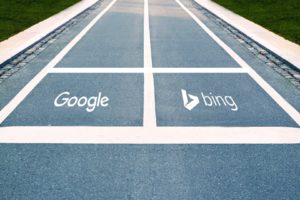Call-only-ads vs call extensions
Which delivers the most call conversions?
When call-only-ads were introduced by Google back in 2015, they were welcomed by many online advertisers. After all, 2015 was the year mobile searches exceeded desktop searches, so introducing call-only-ads was an obvious thing to do by the search giant. It meant less work for the advertiser since he or she didn’t have to go through the trouble to add call extensions to all the campaigns in a given AdWords-account.
The most compelling argument was that it narrowed the search funnel even more. A call extension still appears alongside a regular text ad, so the prospect might still click through to your website, instead of calling you immediately. Even if your landing page has top-class call-to-actions, you were still a risk to loose the business.
Call-only-ads: not the holy grail for mobile
I’ve been running call-only-ads on several of my AdWords campaigns and frankly, I’m not too enthousiastic. Below you can find some numbers of a campaign I’m currently running for a typical direct-response customer: a locksmith. This is a customer who wants to be called immediately when people arrive late at night at their front door only to find themselves locked out. This campaign started in September, with call extensions and call-only-ads. These are the results for September and October:
| call only ads | other ads with call extensions |
| 18 clicks | 604 clicks |
| 3 conversions | 21 conversions |
| 16,67% conversion rate | 3,47% conversion rate |
This gave me a cost-per-conversion of about 112 €, way too much.
To bring this down, I paused the call-only-ads from November, look what happened:
| all ads (but paused call-only-ads) |
| 269 clicks |
| 26 conversions |
| 9,67% conversion rate |
Resulting in a cost-per-conversion of 55 €. Given the fact the locksmith charges about 80 € to help you out, the campaign has already become profitable. By only working with call-extensions, the campaign acquired even more conversions than with call-only-ads running.
What prevents people to effectively make a phone call?
So given the fact that call-only-ads make life a lot easier for customers, everything is practically offered on a silver plate. However, prospects often seem reluctant to make a phone call. How could this be? Obviously, there is no clear answer but some things popped up in my mind.
- A click on a call-only-ad does not result in a phone call automatically. It just dials the number on the prospect’s phone. It is still up to the user to start the phone call.
- Maybe a prospect still want to take a look at the company’s website to find out if the services they offer are really the ones he’s looking for before effectively making the call.
- Could it be that the regular text ads are still a bit more appealing to a prospect, after all it offers the possibility to store a lot more information about your business.
I will certainly be very critical if I ever decide to use call-only-ads again in the future.
Do you have any experience with this form of advertising? Feel free to share your insights how you applied call-only-ads in your AdWords campaigns.










